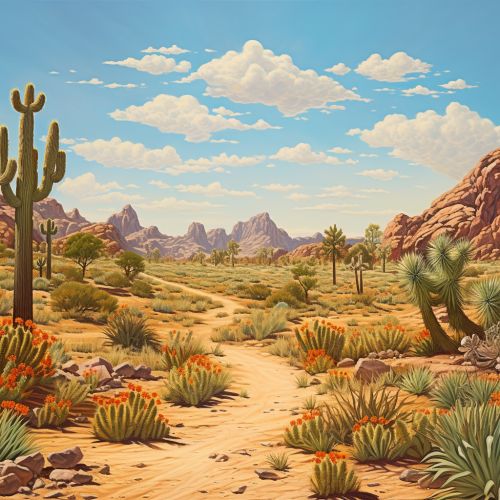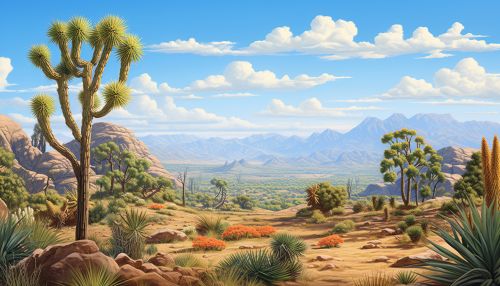Flora of California Deserts
Introduction
The Flora of California Deserts represents a diverse and unique ecosystem, characterized by a wide range of plant species adapted to the harsh desert conditions. This article delves into the various types of plant life that thrive in the arid and semi-arid regions of California, providing a comprehensive overview of the desert flora in this region.
Geographical Overview
The California Deserts encompass two major deserts: the Mojave Desert and the Colorado Desert. The Mojave Desert, known for its signature plant, the Joshua Tree, covers the northeastern part of the state. The Colorado Desert, a part of the larger Sonoran Desert, spans the southeastern part of California and is characterized by its lower elevation and higher biodiversity.


Adaptations to Desert Conditions
Plants in the California Deserts have developed a variety of adaptations to survive the extreme desert conditions. These include physiological adaptations like drought resistance, as well as morphological adaptations like reduced leaf size to minimize water loss.
Drought Resistance
Many desert plants exhibit drought resistance, a survival strategy involving various physiological mechanisms such as deep root systems for accessing groundwater, and the ability to store water in their leaves, stems, or roots.
Morphological Adaptations
Morphological adaptations include features like reduced leaf size, which minimizes water loss through transpiration, and the development of spines for protection against herbivores.
Major Plant Types
The California Deserts are home to a wide variety of plant types, including cacti, succulents, shrubs, and trees.
Cacti
Cacti are a prominent feature of the California Deserts. They are well-adapted to the desert environment, with features like thick, waxy skin to reduce water loss, and sharp spines for protection.
Succulents
Succulents are another common plant type in the California Deserts. These plants store water in their leaves, stems, or roots, allowing them to survive long periods of drought.
Shrubs
Desert shrubs like the Creosote Bush and Brittlebush are common in the California Deserts. These plants are adapted to the harsh desert conditions, with features like small, waxy leaves to reduce water loss, and deep root systems to access groundwater.
Trees
The Joshua Tree, a type of yucca, is one of the most iconic trees of the California Deserts. Other desert trees include the California Fan Palm, which is often found in desert oases.
Conservation Efforts
Conservation efforts for the flora of California Deserts involve preserving the unique biodiversity of these regions, protecting endangered species, and restoring damaged ecosystems. Organizations like the California Department of Fish and Wildlife and the U.S. Fish and Wildlife Service play key roles in these conservation efforts.
